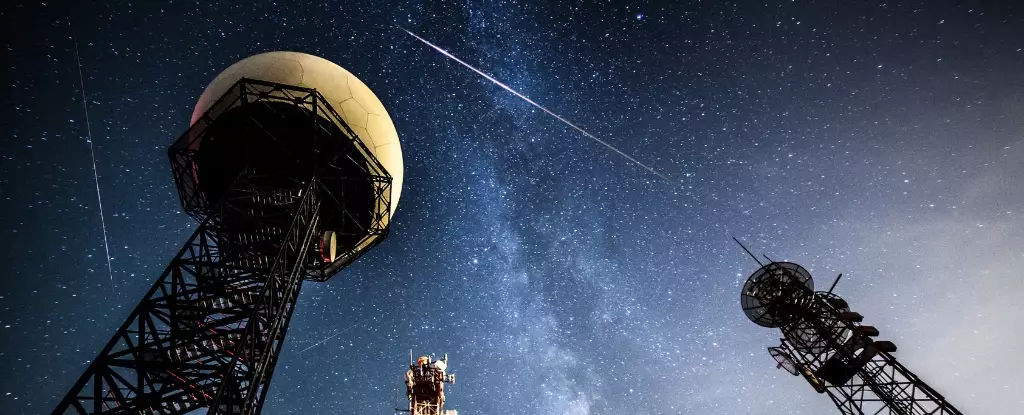The months of July and August present an unparalleled opportunity to connect with the cosmos, offering clear, warm nights perfect for stargazing. Unlike the colder, cloudier months, summer nights in both hemispheres provide extended hours of darkness, allowing sky enthusiasts to indulge in the mesmerizing spectacle of meteor showers without the need for special gear. This period is not just about casual views; it’s a gateway for awe-inspiring celestial displays that can ignite a lifelong passion for astronomy or simply bring a profound sense of wonder to your summer nights.
The timing of these meteor showers is carefully choreographed by the Earth’s journey through debris trails left behind by comets and asteroids. As our planet orbits the Sun, it repeatedly intersects these cosmic remnants with predictable regularity. When these tiny particles enter Earth’s atmosphere at high velocities, they incinerate, producing brilliant streaks of light across the night sky—hence, the “shooting stars” that mesmerize millions annually. This celestial ballet is predictable yet profoundly humbling, reminding us of our fragile connection to the universe.
Key Meteor Showers to Watch This Summer
Among the most captivating meteor showers of the year, three standout events dominate the summer nights: the Alpha Capricornids, Perseids, and Southern Delta Aquariids. Each offers a different experience—some dazzlingly bright with fewer meteors, others prolific and abundant. Their peak dates are spaced out, providing multiple opportunities to witness a celestial spectacle.
Starting around mid-July, the Alpha Capricornids grace northern and southern skies with their bright, sporadic meteors. Originating from comet 169/NEAT, these meteors are known for their exceptional brightness. Unlike more crowded showers, the Alpha Capricornids deliver intense flashes—fireballs that stand out even amid light pollution. With only about five meteors per hour, their rarity makes each sighting a treasure. Their peak around July 29-30 coincides with a waning crescent Moon, creating ideal viewing conditions that enhance visibility. The best viewing hours tend to be after sunset, once the skies are dark enough, with late evening being optimal.
Moving into mid-August, the Perseids depart from their mythic status and become the star of the show for many observers. With origins in comet Swift-Tuttle—the same long-period comet that takes over a century to orbit the Sun—these meteors are prolific and dynamic. They radiate from a point near Perseus and are famous for their high rates, sometimes reaching up to 75 meteors per hour under perfect conditions. The Perseids are a vigorous shower, renowned for their frequent bright streaks, often leaving lingering trails. However, this year’s peak coincides with a waxing gibbous Moon, which can wash out fainter meteors but won’t completely obscure the show. Early morning hours, particularly between midnight and dawn, offer the best chance to witness the full spectacle. With multiple nights of activity spanning August, you have a decent shot at catching these shooting stars at their most dazzling.
Then there are the Southern Delta Aquariids, sometimes overshadowed by their more famous counterparts but equally compelling. Originating from the short-period comet 96P/Macholz, these meteors appear in late July, with their peak also around July 29-30. They are characterized by a relatively modest rate of 20-25 meteors per hour and tend to be faint and subtle—more of a gentle shimmer than a thunderous display. Despite their modest brightness, they can surprise with occasional brighter fireballs, especially given historical outbursts like those in 1977 and 2003. The current year’s conditions are particularly favorable, with the waxing crescent Moon setting early and giving way to darker skies. For those seeking a more intimate, less crowded viewing experience, these showers offer a perfect opportunity.
Maximizing Your Meteor-Watching Experience
Witnessing meteors isn’t about having top-tier telescopes or high-tech gear; sometimes, the simplest tools are enough. A comfortable lying space, warm blankets, and perhaps a pair of binoculars can significantly heighten your experience, especially for the faintest streaks. Modern technology can be your trusted ally—sky-watching apps like Star Walk or Stellarium help pinpoint where and when the meteors will appear, turning casual observers into amateur astronomers with minimal effort.
Patience is key. Find a dark, open spot away from city lights, and give your eyes time to adapt to the darkness. The best views often come after midnight—long after twilight has faded and before dawn’s first light. Be prepared to wait, and keep your gaze directed toward the radiant points in the sky, although meteors can appear anywhere. A sense of relaxed anticipation will serve you best, transforming what could be an ordinary night into an extraordinary memory.
Finally, embrace the experience fully—bring snacks, relax, and allow yourself to be humbled by the night sky’s silent grandeur. For many, the allure of meteor showers is not just about catching a fleeting flash but about reconnecting with a universe that has been silently watching us for billions of years. It’s an opportunity to pause, reflect, and marvel at the vastness that surrounds us—and perhaps, to realize that sometimes, the universe’s greatest gifts come without warning.


Leave a Reply